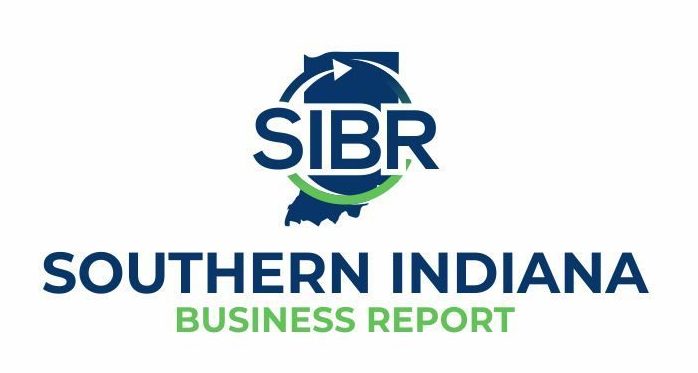The October release of the Federal Reserve’s Beige Book include insights into the economy in the St. Louis-based Eighth District, which includes much of Southern Indiana as well as neighboring Southern Illinois, Western Kentucky, and other regions further afield in Missouri, Arkansas, Tennessee, Missouri, and Louisiana.
The Beige Book reported that the region has seen a slight decline in economic conditions in recent weeks, with softening demand, growing price sensitivity by consumers, and continuing labor shortages.
The sector-by-sector break down of conditions is as follows:
Labor Markets
Employment has remained unchanged since our previous report. Contacts across the region continued to report difficulty filling positions and retaining workers. Some employers reported that increased flexibility and benefit policies implemented to improve retention are starting to bring about improved retention. However, there were still widespread reports of skilled tradespersons and technicians being poached by competitors. Contacts noted particular difficulty staffing weekend and late-night shifts. To improve recruiting and retention, some employers have focused on post-secondary institutions; one freight contact reported that the number of firms at a training center’s career fair had tripled as firms sought to sign-on students prior to graduation.
Wages across the District have grown moderately since our previous report. Healthcare contacts reported raising wages by 7-10% this year, but the rate of wage growth has begun to slow recently. A recent survey of Arkansas firms noted 90% of trucking fleets raised their pay an average of 11% over the past year.
Prices
Prices have continued to increase moderately since our previous report. Although input costs have increased across the board, contacts reported mixed results in their ability to pass through costs to consumers. A contact in the catfish industry, however, noted that they were hesitant to increase prices due to consumer pushback. Other sectors, like healthcare, food service, and nonprofits, were unable to pass on costs to consumers and instead cut services or reduced margins. A contact in the car industry reported no transfer of costs to consumers due to low demand for new cars. However, a contact in the hotel industry reported increased consumer prices of 15-20% due to increased labor costs and renegotiated contracts with suppliers.
Consumer Spending
District general retailers, auto dealers, and hospitality contacts reported mixed business activity and a mixed outlook. Retailers in the District noted that customers are changing shopping patterns due to high inflation; customers are becoming less brand loyal and are purchasing less on average. An auto dealer in Little Rock reported their sales are strong, especially in pre-owned cars; while they have a positive outlook for the upcoming months, they noted that customers are starting to have affordability issues because there is less inventory of lower-cost pre-owned cars. Hospitality contacts reported mixed business activity for this past month, with one St. Louis contact noting that inflation continues to hurt their customer base.
Manufacturing
Manufacturing activity has remained unchanged since our previous report. Firms have reported slight upticks in production but slight downticks in new orders. Production has remained stable despite the drop in new orders due to the large order backlog. Input costs have remained high, and manufacturers have lost some of their sales volume when raising sales prices. Firms also continued to struggle in maintaining adequate staffing. One agricultural equipment manufacturing company noted that they have been selling more equipment to individual households lately, as it appears household improvement projects are on the rise. Supply chain conditions have improved slightly since our previous report, but manufacturers expect shortages and delays to remain a significant constraint for the next 6 months.
Nonfinancial Services
Activity in the nonfinancial services sector has decreased slightly since our previous report. Transportation contacts reported that labor remains a critical issue, especially in transportation facility security and regional aviation. One Louisville-area contact reported canceling of passenger services due to shortages of low-skilled labor. As input costs and the cost of borrowing funds have increased, the affordability of transportation has decreased across the District, driving low-income consumers out of the market for vehicles and tickets. Across the District, rural medical facilities are cutting services, notably labor and delivery services, due to increased costs of labor, equipment, and pharmaceuticals. While demand for travel nurses has leveled off, healthcare contacts do not expect the nursing shortage to subside. One nursing school in Missouri experienced a 30-40% reduction in enrollment as well as a shortage of nursing educators.
Real Estate and Construction
The real estate market has slowed since our previous report. In commercial real estate, vacancies remain high for office and retail space. Small floorplan suburban office space is in high demand, but elsewhere demand for office space remains low. Since our previous report, residential and industrial real estate markets continued to have low inventory, inventory has increased, and pending home sales have decreased. Multiple contacts reported companies offering to sell entire subdivisions at discount prices due to concerns about future demand. Elevated prices and rising mortgage rates have driven some prospective home buyers to renting, which has led to further increases in rental rates since our previous report. Still, the speed at which residential and industrial rental rates are increasing has slowed since our previous report.
Residential and industrial construction has slowed as interest rates have increased and banks are less willing to lend. Commercial real estate construction remains extremely slow. Supply chain issues and lead times have lessened since our previous report. Some contacts are continuing to order supplies in advance to avoid future disruptions. One hotel construction contact recently ordered 100 toilets 15 months in advance of project completion and is storing them in a warehouse.
Banking and Finance
Banking conditions in the District are largely unchanged. Real estate lending activity remains low since interest rates have increased, but overall loan demand has increased slightly compared with a year ago. Memphis-area banking contacts expect overall loan growth to start slowing soon. Since last quarter, commercial and industrial loans have seen growth, while consumer loan growth is roughly the same. Credit quality remains strong, as past-due and problem loans remain at historic lows. Banks reported that upward pressure on deposit rates is increasing. One Memphis contact reported receiving a growing number of calls from deposit customers regarding rates, which have reached as high as 2%.
Agriculture and Natural Resources
District agriculture conditions have declined modestly since our previous report. Production and yield forecasts declined for corn, rice, and soybeans from August to September. Crop yields have remained stable for corn, fallen for rice and soybeans, and improved for cotton from August to September. However, crop yields have fallen consistently compared with 2021. District production and yields have been affected by extreme weather conditions such as drought, flood, strong winds, and hail.
Agriculture contacts remain concerned about rising input prices, global supply chain disruptions, and the extremely competitive nature of the current labor market. Fertilizer prices are up 30% in 2022 after increasing 80% in 2021. Supply chain issues have continued to be a challenge, with one grain processer reporting waits of 48-50 weeks for packaging materials. Contacts do not foresee these conditions changing for the next 6 months.



